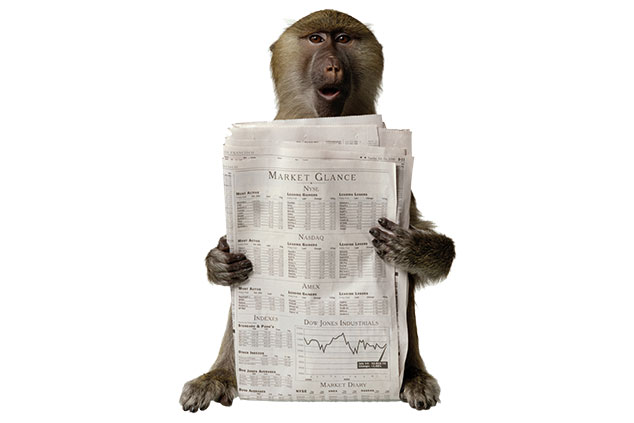
Media chatter would have you believe markets are heading for disaster. Don’t believe a word of it, says Max King.
It doesn’t take much for what economist Ed Yardeni calls “the consensus of half-baked instant market pundits” (“chimp” for short) to find its voice. The media wants an explanation for every material market move, especially the downward ones, and the chimp community is their first port of call.
To play the game, the chimp links the market movement that day with another item of news, ignores the context, projects it into an immutable trend and declares that markets are doomed. Hence the market setback in the first quarter was blamed on rising interest rates, Trump’s trade war, inflation, the demise of the tech sector, Russia and a plethora of other geopolitical events.
The mundane truth
The truth was more mundane. The US market started the year trading at 18.4 times forecast 2018 earnings, the highest rating for years and one that left little room for upside. Other markets were less expensive, but the US accounts for over half the MSCI World index and the rest of the world is invariably pulled in the same direction as the US. US interest rates were raised by 0.25% in February, as they were three times in 2017, but this was no surprise. The Federal Reserve has carefully laid out the path of the future direction for interest rates (in the absence of sustained data surprises) at least a year ahead. It had projected three increases in 2018. This, belatedly, led to an increase in US bond yields from 2.4% for ten-year maturities to nearer 3%, the highest for four years. The yield on 30-year bonds, however, only reached 3.2%, the same as in early 2017 and 2015.
This suggests that bond investors had not taken the Federal Reserve guidance on interest rates seriously, rather than that inflation and bond yields are heading remorselessly higher. There is little evidence of fiscal restraint in the US, which points to continued high bond issuance, but there is also little evidence of a return to the reckless bank lending practices that marked previous boom-bust cycles. Much of the rise in bond yields reflects higher inflation-adjusted yields, rather than inflation itself.
Inflation has picked up somewhat, partly due to the rise in the oil price, partly as the economic cycle matures. As Anatole Kaletsky of Gavekal says, “bond investors are not yet alarmed by inflation so there is no reason for the Federal Reserve to panic or for investors in other markets to worry”. He sees little chance of equity markets crashing without a bond-market crash first.
Disappointing earnings might justify market weakness, but the evidence has been in the opposite direction. According to Yardeni, and thanks mostly to the Trump tax cuts, the consensus estimate for S&P 500 earnings in the first quarter has increased 5.1% to $34.42 in the year to date, the largest increase since 2004. Earnings are expected to jump 18.5% year on year on revenues up 7.3%, and to rise 20% year on year in the next three quarters, falling to a little over 10% in the first quarter of 2019. This means the valuation of the US market, down to 16 times forward earnings, no longer looks stretched.
Chimp chatter depresses sentiment
Sentiment at the start of the year, measured by investor surveys, was at historically high levels, but chimp chatter has seen it drop to more cautious levels. This is bullish, since euphoric sentiment can only deteriorate while despair can only ameliorate. According to brokers Numis, the sums raised from new fund issues dropped 43% in the first quarter and from secondary issuance (existing funds raising new equity) they dropped 55%. Investors are clearly very cautious.
What could go wrong? The Federal Reserve could tighten monetary policy too far. A concerted move to protectionism in the US would be bad for the economy and corporate earnings. A further rise in the oil price, already above $70 a barrel, could stoke inflation worries and encourage central banks to raise interest rates more aggressively. Finally, there are what Donald Rumsfeld called the “unknown unknowns”, the risks that we don’t even know are there.
The chimp view is that the current steady recovery in markets is just the calm before the next storm. It’s much more likely that the US market will continue upwards, eventually breaking out to new highs, with the rest of the world following. Maybe there will be a change of gear, with “value” stocks out-performing “growth”, but reports of the demise of the technology bull market look much exaggerated. Recovery stocks are performing well, the outlook for banks is improving, resource shares look undervalued relative to commodity prices, property shares look undervalued relative to net asset values and smaller companies should continue to outperform. Investors are spoilt for choice.
Don’t wait for the chimps to proclaim that the clouds have cleared and it is safe to venture back in to the markets. Buy now.